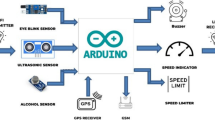Abstract
Time based alarms are used by many on a daily basis. Spatial alarms extend the very same idea to location based triggers, which are fired whenever a mobile user enters the spatial region of the location alarms. Spatial alarms provide critical capabilities for many mobile location based applications ranging from personal assistants, inventory tracking to industrial safety warning systems. In this paper we present a middleware architecture for energy efficient processing of spatial alarms on mobile clients, while maintaining low computation and storage costs. Our approach to spatial alarms provides two systematic methods for minimizing energy consumption on mobile clients. First, we introduce the concept of safe distance to reduce the number of unnecessary mobile client wakeups for spatial alarm evaluation, enabling mobile clients to sleep for longer intervals of time in the presence of active spatial alarms. We show that our safe distance techniques can significantly minimize the energy consumption on mobile clients compared to periodic wakeups while preserving the accuracy and timeliness of spatial alarms. Second, we develop a suite of techniques for minimizing the number of location triggers to be checked for spatial alarm evaluation upon each wakeup. This further reduces the computation cost and energy expenditure on mobile clients. We evaluate the scalability and energy-efficiency of our approach using a road network simulator. Our spatial alarms middleware architecture offers significant improvements on battery lifetime of mobile clients, while maintaining high quality of spatial alarm services, especially compared to the conventional approach of periodic wakeup and checking all alarms upon wakeup.
















Similar content being viewed by others
References
US Census Bureau, Tiger, tiger/line and tiger-related products. Available at http://www.census.gov/geo/www/tiger/
Aurenhammer F (1991) Voronoi diagrams a survey of a fundamental geometric data structure. ACM Comput Surv 23(3):345–405
Bartlett JF, Brakmo LS, Farkas KI, Hamburgen WR, Mann T, Viredaz MA, Waldspurger CA, Wallach DA (2000) The itsy pocket computer. Technical Report 2000/6, COMPAQ Western Research Laboratory
Bazinette V, Cohen NH, Ebling MR, Hunt GDH, Lei H, Purakayastha A, Stewart G, Wong L, Yeh DL (2001) An intelligent notification system. IBM research report
Cherkassky BV, Goldberg AV, Radzik T (1993) Shortest paths algorithms: theory and experimental evaluation. Math Program 73:129–174
Dey AK, Abowd GD (2000) Cybreminder: a context-aware system for supporting reminders. In: Handheld and ubiquitous computing: second international symposium, HUC 2000, Bristol, UK proceedings
Dijkstra EW (1959) A note on two problems in connection with graphs. Numerische Math 1:269–271
Erwig M (2000) The graph voronoi diagram with applications. In: Networks, pp 156–163
Flautner K, Mudge T (2002) Vertigo: automatic performance-setting for linux. SIGOPS Oper Syst Rev 36(SI):105–116
Flinn J, Satyanarayanan M (1999) Energy-aware adaptation for mobile applications. In: SOSP ’99: proceedings of the seventeenth ACM symposium on operating systems principles. ACM Press, New York, NY, USA, pp 48–63
Fortune S (1997) Voronoi diagrams and delaunay triangulations. In: Goodman JE and OŠRourke J (eds) Handbook of discrete and computational geometry. CRC, Boca Raton, pp 377–388
Graf M, Winter S (2003) Netzwerk-voronoi-diagramme. Österr Z Vermess Geoinf 91:166–174
Guttman A (1984) R-trees: a dynamic index structure for spatial searching. In: SIGMOD ’84: proceedings of the 1984 ACM SIGMOD international conference on management of data. ACM, New York, pp 47–57
Heidemann J, Shah D (2000) Location-aware scheduling with minimal infrastructure. In: USENIX conference proceedings. USC/Information Sciences Institute, USENIX, San Diego, pp 131–138
Kim SW, Kim MC, Park SH, Jin YK, Choi WS (2004) Gate reminder: a design case of a smart reminder. In: DIS ’04: Proceedings of the 2004 conference on designing interactive systems. ACM, New York, pp 81–90
Ludford PJ, Frankowski D, Reily K, Wilms K, Terveen L (2006) Because i carry my cell phone anyway: functional location-based reminder applications. In: CHI ’06: proceedings of the SIGCHI conference on human factors i computing systems. ACM, New York, pp 889–898
Mokbel MF, Xiong X, Aref WG (2004) Sina: scalable incremental processing of continuous queries in spatio-temporal databases. In: In SIGMOD, pp 623–634
Mudge T (2001) Power: a first-class architectural design constraint. In: Computer. Michigan Univ., Ann Arbor, pp 52–58
Prabhakar S, Xia Y, Kalashnikov DV, Aref WG, Hambrusch SE (2002) Query indexing and velocity constrained indexing: scalable techniques for continuous queries on moving objects. IEEE Trans Comput 51(10):1124–1140
Sadeh NM, Gandon FL, Kwon OB (2005) Ambient intelligence: the mycampus experience. In: CMU-ISRI-05-123
Sohn T, Li KA, Lee G, Smith I, Scott J, Griswold WG (2005) Place-its: a study of location-based reminders on mobile phones. In: UbiComp 2005: ubiquitous computing
Zhang J, Zhu M, Papadias D, Tao Y, Lee DL (2003) Location-based spatial queries. In: In SIGMOD, pp 443– 454
Acknowledgements
This work is partially supported by grants from NSF CISE under CNS, NetSE, and CyberTrust, a grant from AFOSR, an IBM SUR grant, and an IBM faculty award, and an Intel research council grant. We would also like to thank Ramesh Chandran, Kipp Jones, Calton Pu, and the mobile computing group within the DiSL lab for the valuable discussions and help with the experiments.
Author information
Authors and Affiliations
Corresponding author
Rights and permissions
About this article
Cite this article
Murugappan, A., Liu, L. An Energy Efficient Middleware Architecture for Processing Spatial Alarms on Mobile Clients. Mobile Netw Appl 15, 543–561 (2010). https://doi.org/10.1007/s11036-010-0221-2
Published:
Issue Date:
DOI: https://doi.org/10.1007/s11036-010-0221-2




